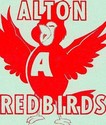Storing the Image
|
I used to teach computer literacy to students, all who had master degrees, but never needed to use the computer much until now. They were all terrified that they would do something wrong and create a burnt smell and lots of smoke. I assured them that nothing would happen by going over Herb's Three Attributes of Computers:
|
||
|
When we successful capture an image there are three things you must now tell your computer:
|
||
| NAME - LOCATION - FORMAT | ||
| NAME 000000000000000000000000000000000000000 Naming Convention The way you name your image files is very important. A good system will save you a lot of time as well as reduce the chances of losing files. There are two things to bear in mind:
|
.jpg) |
|
|
Try to keep the name as short as possible while including as much information as possible. Lower Case It is a very good idea to use all lower-case letters for all file names. There are two main reasons for this.
Using a consistent case reduces confusion and errors to such a significant degree that it really is worth it. Start now and you'll soon get used to it.
Spaces and Non-Alphanumeric Characters For similar reasons to the lower-case argument, we strongly recommend that you use only letters, numbers, hyphens and underscores on your file names. These are all safe to use on the internet. Also, do not have spaces in the file name - this will confuse some operating systems and cause errors in web pages. You have two options here (A) No spaces at all or (B) words seperated by dashes or underscores for readability. |
||
|
(A) AltonHighSchool.jpg |
(B) Alton_High_School.jpg |
|
|
|
||
 |
||
| I can't find the file I saved *^%#$%^ | ||
|
LOCATION How do we do this? The best practice is to have a designated place on your computer to save files. We are going to create a special place on your computer where you can store images.
|
||
 |
||
|
Look here for your Local Disk (C:) under Hard Disk Drives. Click on the C: Drive and your computer will display everything you have saved on this drive. That could be quite a lot. Keep in mind that your computer contains a lot of options regarding how your stored files can be displayed. What you see may not look exactly look like what is illustrated in this "How To." |
||
| As we go forward from here it might be helpful if you think of the C: Drive as a filing cabinet. The actual drive mechanism looks like the image below. |  |
|
 |
||
.jpg) |
If, however, we place all our files inside a big filing cabinet, how would we quickly locate an individual file among the thousands the typical reside on a hard drive. We need a way of classifying a group of similar files. So, just as we do in the physical world we employ folders. Let's create a "Image" folder to go in our filling cabinet (C: Drive). Here's how we will do this. | |
|
Go back to My Computer and double click on the C: Drive icon. In the window that opens up click on New Folder.
|
 |
|
 |
||
| A new folder icon will appear in the C: Drive list and look like the image to the right. | ||
| Right-click the new folder icon and select Rename from the list of options. The icon will change to a text field ready for you to type in the name of your image folder. Before typing it should appear like the image to your right. |  |
|
| Type the name Images or a name of your choice. You now that a folder that you can save your image files to whenever you capture a picture. This is where you will go to when access the image when it is time to upload to our site. |  |
|
| If you store a lot of pictures you may have to add additional folders inside your image folders (sub-folders) using exactly the same procedure we used to create the image folder. It might look something like the image below. | ||
 |
||
|
|
||
| DIGITAL IMAGE FILE TYPES | ||
|
JPG, GIF, and PNG. What are they? These and many other file types are used to encode digital images. Part of the reason for the plethora of file types is the need for compression. Image files can be quite large, and larger file types mean more disk usage and slower downloads. Compression is a term used to describe ways of cutting the size of the file. Another reason for the many file types is that images differ in the number of colors they contain. If an image has few colors, a file type can be designed to exploit this as a way of reducing file size. The following are the only image file types this site supports. Do not use any others. |
||
| JPG JPG or JPEG stand for Joint Photographic Experts Group (Pronounced as individual letters or as J-Peg) |
||
| GIF GIF stand for Graphics Interchange Format (Pronounced like a birthday gift but without the t) |
||
| PNG PNG stand for Portable Network Graphics (Pronounced as ping as in Ping-Pong) |
||
